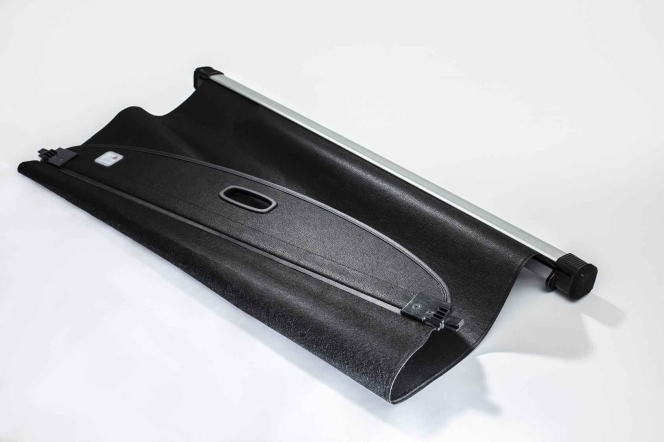
By T Murrali:
Freudenberg Performance Materials India (FPMI), part of Freudenberg Performance Materials (FPM), a global manufacturer of technical textiles, nonwovens and fibre, has been operational in India with a production site in Chennai since 1998. It has plans also to cater to the modern commercial vehicles by expanding its product portfolio.
 Globally, FPM manufactures high-performance technical textiles and nonwovens for a wide range of applications including automotive, building materials, clothing, hygiene, wearables and healthcare. The FPM products / materials for automotive industry customers include mechanically bonded nonwovens for car headliners, trunk and rear seat coverings that are characterized by abrasion resistance. Besides, it caters to the OEMs with tuft backing for carpets and moulded under-body panels and wheel liners. FPM products make driving more efficient, climate friendly and comfortable. Nonwovens are lighter than woven variants and, therefore, support a more economic driving style. They help absorb sound, ensure pleasant climate inside the vehicle and help save fuel and reduce CO2 emissions.
Globally, FPM manufactures high-performance technical textiles and nonwovens for a wide range of applications including automotive, building materials, clothing, hygiene, wearables and healthcare. The FPM products / materials for automotive industry customers include mechanically bonded nonwovens for car headliners, trunk and rear seat coverings that are characterized by abrasion resistance. Besides, it caters to the OEMs with tuft backing for carpets and moulded under-body panels and wheel liners. FPM products make driving more efficient, climate friendly and comfortable. Nonwovens are lighter than woven variants and, therefore, support a more economic driving style. They help absorb sound, ensure pleasant climate inside the vehicle and help save fuel and reduce CO2 emissions.
For some of the products FPMI is an extended arm of the manufacturing locations of FPM outside India. The global company has manufacturing facilities in Germany, Korea, China, Japan, and the US; these are the locations where it has automotive manufacturing hubs.
Speaking to this publication, G Sivasailam, Managing Director, FPMI, said, “Essentially our R&D is in Germany, Korea, China, Japan, and the US which we carry to all other consuming countries. We see the Indian market as very promising in the near future. We want to warm up the market with the services and supplies from other locations, which we are currently doing. Supplies are coming in on a duty-free basis which is used in vehicles for exports. For example, many companies are exporting quite a lot to Latin America; we cater to that by supplying headliners. We also do the sun-roof for many Japanese & Korean based car manufacturers for their export models. Currently the domestic market is catered to by a few suppliers in Mumbai and Gurugram.”
There is substantial value addition for the OEMs and end-customers with the application of non-woven products in which case cost is not a criterion. Still what is preventing the OEMs here from getting them from the global companies like Freudenberg? Sivasailam said, “We use a three-denier fibre which is very fine compared with the six-denier used in the market. So the starting point itself is totally different. Secondly, the kind of binders and latex that we use are all CFC-free and they are also bio-decomposable. At the end of the day a consumer for an entry level car will look at the price. But for the premium cars, the price may not matter much.
Speaking on the advantages he said the NVH values of this product are superior to what is available in the market but the end-consumer finds it a little isometric to the value he is getting. For instance, sound absorption by the headliner is much higher than that of one made out of six-denier but the percentage difference is not necessarily the reason for making this a premium product, the consumer is unable to comprehend the difference. With the evolution of vehicles from ICE to Electric, there are enough opportunities for companies like FPM because the noise created by the IC engine nullifies the other noises while in the EV operation is silent. Therefore, “we see a big opportunity there. That is one particular area where innovation has been directed to by Freudenberg. Not only on headliners but also on back trays, hood liners, floor mats etc. We are coming up with composites which are lighter with longer life for a carpet, offering Lutraflor (Freudenberg technology) floor mats that are lighter and stronger. They have high abrasion resistance that remains despite perpetual usage. The weight here is reduced substantially and the back trays are super absorbent of noise. The hood liners take care of the temperature as well as the noise. These are the areas where we have come up with lighter material, meeting the requirements,” he said.
These products reduce the weight of the four big mats that weigh about 3.5 to 4kg by 25 percent. Overall, there is about 10-15 percent reduction over the conventional products. That’s the reason why today a lot of patronage is shown to these products; as of now they are used only in the C or D segment cars. In India it will take a little more time to reach these segments. Customer awareness level is still not high in India. However, when it comes up, the company would be able to offer a competitive product, considering the economies of scale, which would match the market trends, he said.
UV Rays Impact
Normally, UV rays raise temperature. When they are absorbed by the seats or any component temperature builds up and the a/c in the car is made to work more to maintain the temperature. There is also fuel loss. To cut it down it is necessary to reduce the amount of UV light that goes into the car which would enhance the mileage of the vehicle; passengers also will be benefited as UV rays are not good for the skin.
FPM has developed a composite material for the under-body shield to which patent is pending. “In most countries the under-body shield is metal; we are trying to replace it with a non-woven backed composite that would have the tenacity to take stones and everything hitting it at high speed. Straightaway, the weight proposition will change,” he said. Would that not affect the safety of the vehicle since, for stability, lower centre of gravity is key and this can be achieved by placing heavier stuff under body of the car? Sivasailam said the solution is to support only on the engine side; under-body shield is normally on the engine side so that stones don’t fly into the engine and hit the other parts. When there is lighter material on the front of the vehicle it actually enhances mobility. What is unique is the way the composite is made, the technology and construction; and the amount of tenacity it brings to the product to increase longevity. It’s a 100% recyclable material as well with weight saving up to 40%.
Business Opportunities
On the new opportunities for FPM, Sivasailam said, “We are also having battery separators; they are undergoing development as high storage batteries. It avoids catching fire which mitigates the risk to a great extent because of the ceramic coating. That is where e-mobility will make big commercial success. The other possibilities for the company to explore in India are the commercial vehicles, which are now getting smarter and better as vehicle makers give importance to the interiors; so there is an opportunity for them to get into this business. Even today most accidents take place due to driver fatigue. If that can be minimised it would help. The touch on the headliner or on the seat-back, everything is important. Haptic feeling is not given importance in India as of now. That is something that will be very good with a three-denier head liner. “We are also working on better acoustic properties on the trims. We have a product called Evolon which is a fine fibre technology, spun drawn with very good NVH property. We are working with Evolon in some automotive companies where we feel it can give much superior noise control,” Sivasailam said. (MT)
AEye To Showcase Apollo LiDAR Technology With 1km Range At CES 2026
- By MT Bureau
- December 21, 2025
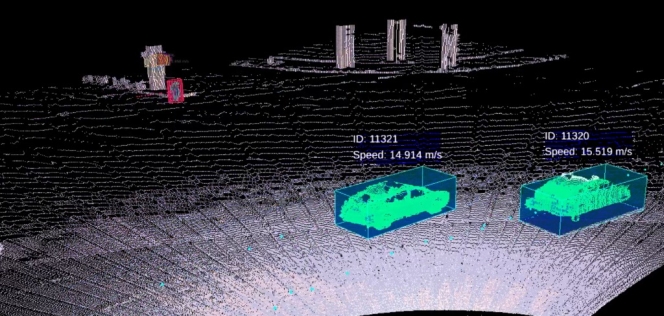
AEye, a provider of LiDAR solutions and manufacturer of the Apollo LiDAR sensor, has announced plans to demonstrate its Apollo sensing solution at CES 2026.
The company will present the Apollo LiDAR sensor, a solution for detecting objects at distances of up to one kilometre. The sensor features a form factor that allows for integration behind windscreens. AEye also plans to highlight how the Apollo and OPTIS solutions can be used for infrastructure and logistics. OPTIS uses computing to deliver 3D perception and analytics for drones, intersections, shipping corridors and logistics hubs.
These technologies are designed to assist with safety, efficiency and visibility. The company’s focus on infrastructure and logistics reflects a strategy for global growth, including in regions such as India, where investment in smart cities and transport networks is increasing.
Matt Fisch, CEO, AEye, said, “CES brings together the most important players in transportation and mobility, making it an ideal venue for us to demonstrate how Apollo and OPTIS are redefining what’s possible with LiDAR. With unmatched range and real-time AI-driven perception, we’re helping our customers tackle complex transportation and infrastructure challenges with scalable solutions built for real-world deployment. We are also looking forward to announcing our next-generation LiDAR, with range capabilities extending beyond one kilometre, underscoring the company’s continued leadership in long-range and ultra-long-range perception.”
The presentation will also include a preview of a LiDAR sensor with detection capabilities exceeding one kilometre, intended for long-range perception requirements.
Image for representational purpose only.
Ather Energy’s New Subsidiary To Focus On Auto Insurance Business
- By MT Bureau
- December 19, 2025
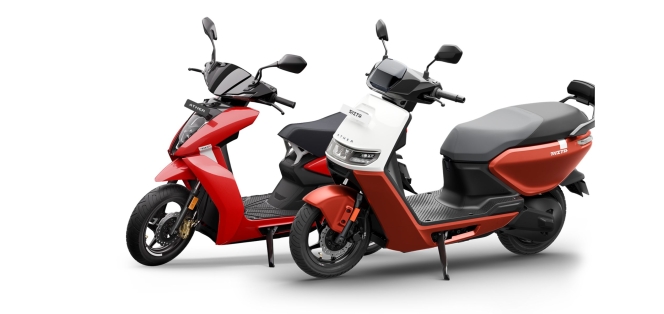
Bengaluru-based electric vehicle maker Ather Energy has confirmed its plans to enter the auto insurance services space by incorporating a wholly-owned subsidiary that will operate as a Corporate Agent.
The move is part of the EV maker’s plans to owmake nership experience more seamless, by providing auto insurance policies, in partnership with multiple insurers. This will also provide a recurring revenue stream by leveraging its existing user base.
Ather Energy also aims to innovative around EV-specific insurance products, simplify renewals and also improve attach rates over time.
Ravneet Singh Phokela, Chief Business Officer, Ather Energy, said, “We have always believed that a good ownership experience goes beyond the vehicle itself. Insurance is a critical part of that journey today, and it’s an area where the experience can be made significantly simpler and more predictable for customers. By bringing insurance distribution closer to the Ather ecosystem, we can make it simpler, more transparent, and better aligned with how our customers actually use their vehicles. Over time, this also gives us the ability to work with partners to design auto insurance products that reflect real EV usage, rather than adapting legacy frameworks. This is a measured but deliberate step, focused on strengthening the ownership experience while building a capability that complements our core offering and scales with the business.”
The EV maker stated that this move is a natural extension, as it can utilise its large customer base, which equates to no additional customer acquisition cost.
Ather Energy stated that entering the auto insurance space is part of its larger EV ecosystem building mission, which goes beyond just selling products, charging infrastructure, servicing and accessories among others.
Exicom Launches Exciom One EV Charging Rollout Solution
- By MT Bureau
- December 18, 2025
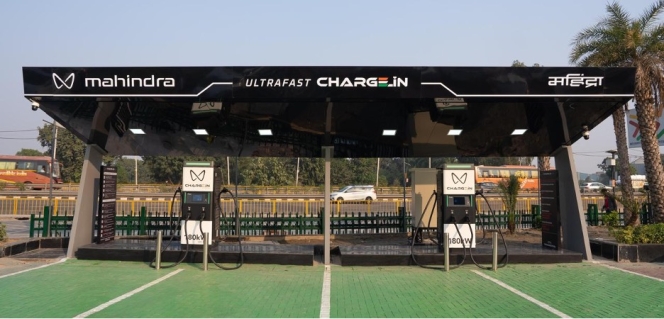
Exicom Tele-Systems has introduced Exicom One, a solution for the construction and operation of electric vehicle charging infrastructure. The service handles site surveys, electrical setup, software, operations and maintenance.
The launch coincides with the expansion of charging networks by Charge Point Operators (CPOs) in India. These organisations plan to deploy chargers, including DC units, by 2030.
The solution provides a framework for infrastructure deployment by combining hardware and software. The company is providing end-to-end support right from site assessment & planning for pre-installation, to civil works, electrical integration and hardware setup for deployment. It also provides AI-driven management, diagnostics and maintenance to support the EV charging operations.
Exicom One manages the orchestration of firmware and software. The platform allows businesses to monitor and optimise stations in real time.
The company recently partnered with an EV manufacturer to install charging stations along highway corridors and at traffic points. The infrastructure is designed to integrate renewable energy systems and Vehicle-to-Grid (V2G) applications.
The service also utilises Harmony Connect, an AI platform for predictive maintenance.
Anant Nahata, Managing Director and CEO, Exicom, said, “India’s EV story will only move as fast as the infrastructure behind it. While hardware innovation gets most of the attention, it is execution on the ground that truly defines success. Exicom One is built to remove that friction by bringing every piece of the puzzle together under one accountable partner. It is a smarter, faster way for CPOs and fleets to scale with confidence and focus on what really matters: delivering reliable charging experiences.”
ZF To Present Software Active Noise Reduction For Vehicle Chassis At CES
- By MT Bureau
- December 17, 2025
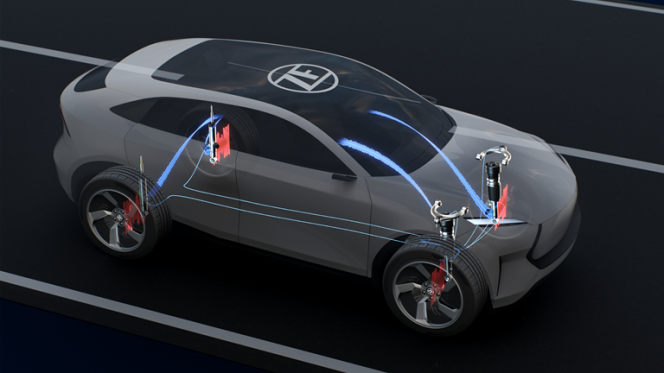
German tier 1 supplier ZF is presenting a new ‘Active Noise Reduction’ software function for vehicle chassis at the Consumer Electronics Show (CES) 2026. The purely software-based function reduces in-vehicle tyre noise transmitted through chassis components without requiring additional hardware. The company plans to expand the use of the function to other ZF chassis actuators in the future.
The solution uses ZF’s Smart Chassis Sensor with an integrated acceleration sensor to measure vibrations from the tyres. A developed algorithm recognises the characteristic noise patterns of tyre cavity noise around 200 hertz.
The software generates a counter-signal via ZF’s cubiX software through the valves of semi-active dampers (CDC). The function uses micro-movements of the damper to specifically reduce noise interference without impairing the damper function.
The technology achieves noise reductions of more than 3 dB, with future potential for up to 10 dB. This software-based noise reduction is achieved without additional installation costs or space requirements. Active Noise Reduction can be adapted to different vehicle types via software, opening a market for lower-priced vehicles.
Dr. Peter Holdmann, Member of the ZF Board of Management and Head of Division Chassis Solutions, said, “Active Noise Reduction is an excellent example of how we use smart algorithms to make ZF components even more efficient. This gives our semi-active CDC dampers a clear unique selling point in the market and sets new standards in comfort – without the need for any additional noise dampening hardware.”
Series production is scheduled to start in 2028. In the future, the function may be used in other ZF actuators, such as for active reduction of brake squeal.
Holdmann added, “Thanks to our system expertise, we are able to offer our mechatronic actuators as true innovation drivers with the help of smart algorithms and we will extend our software-based control approach to other ZF actuators in the future. The goal for us is clear: mechatronic actuators that are capable of efficiently reducing both their own and external noise with the help of software.”
The new function fits into ZF’s Chassis 2.0 product strategy, which uses intelligent and networkable actuators to enable new chassis functions via software.
Holdmann noted: “With our Chassis 2.0, we are laying the foundation for the software-defined vehicle.”






Comments (0)
ADD COMMENT